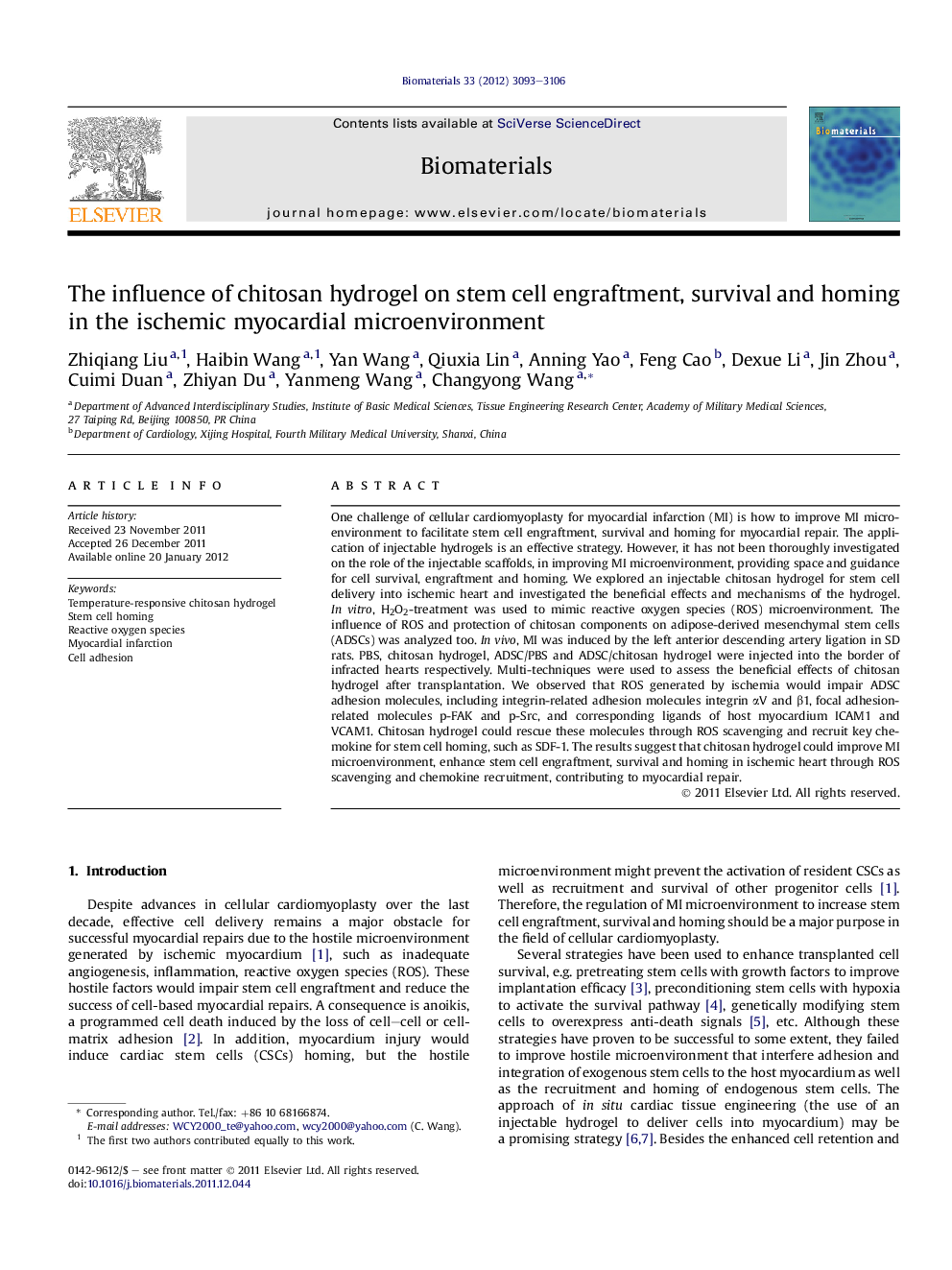| Article ID | Journal | Published Year | Pages | File Type |
|---|---|---|---|---|
| 6958 | Biomaterials | 2012 | 14 Pages |
One challenge of cellular cardiomyoplasty for myocardial infarction (MI) is how to improve MI microenvironment to facilitate stem cell engraftment, survival and homing for myocardial repair. The application of injectable hydrogels is an effective strategy. However, it has not been thoroughly investigated on the role of the injectable scaffolds, in improving MI microenvironment, providing space and guidance for cell survival, engraftment and homing. We explored an injectable chitosan hydrogel for stem cell delivery into ischemic heart and investigated the beneficial effects and mechanisms of the hydrogel. In vitro, H2O2-treatment was used to mimic reactive oxygen species (ROS) microenvironment. The influence of ROS and protection of chitosan components on adipose-derived mesenchymal stem cells (ADSCs) was analyzed too. In vivo, MI was induced by the left anterior descending artery ligation in SD rats. PBS, chitosan hydrogel, ADSC/PBS and ADSC/chitosan hydrogel were injected into the border of infracted hearts respectively. Multi-techniques were used to assess the beneficial effects of chitosan hydrogel after transplantation. We observed that ROS generated by ischemia would impair ADSC adhesion molecules, including integrin-related adhesion molecules integrin αV and β1, focal adhesion-related molecules p-FAK and p-Src, and corresponding ligands of host myocardium ICAM1 and VCAM1. Chitosan hydrogel could rescue these molecules through ROS scavenging and recruit key chemokine for stem cell homing, such as SDF-1. The results suggest that chitosan hydrogel could improve MI microenvironment, enhance stem cell engraftment, survival and homing in ischemic heart through ROS scavenging and chemokine recruitment, contributing to myocardial repair.
